My lovely readers, as you enjoy this story, please keep in mind that my homesteads book was written over 10 years ago by a very naive, romantic and history loving 20ish year old, intent upon capturing and preserving the legends, as well as the architectural heritage, of the homeland area she loved. As such, much of the present day facts have altered - for example, Perricoota Homestead has recently embarked upon a new career as holiday accommodation and reception venue (how totally perfect !! Click the link to take a peek.....), but at the time this was written, this was not even a grain of an idea in the head of the new owners. The language and writing style used are the simple, uneducated musings of myself, aged 20ish. Hoping you enjoy just the same - and again, biggest thanks to the lovely Brooke Orchard for the photographs from so long ago !
The sleepy river murmurs low and loiters on its way"
At Perricoota Station the water runs deep, and rightly so, for the Kori word for water hole, is indeed, Perricoota.
One day while the river was pushing its way to South Australia, Ron Watson - one time part owner of Perricoota, forged his way out to the middle of the swollen Murray in his trusty fishing boat. Letting down his line in an area he knew to be the common riverbed, he let the weight touch the bottom. Ron tied a knot and hauled his line back in - 25 feet deep was the measure. A little further downstream and he put his line in once again, but this time the measure was 75 feet - The Perricoota Water Hole !
This charming spot on a broad bend in the Murray, a meandering 30 minute drive from the township of Moama, is as sunny and charming as it is quiet and deep. An immense red brick homestead happily watches the water stream over the water hole, one wing having nestled on the sandhill since the 1860's.
It was the year 1843, a time when the central Murray region was being opened up to early pioneering settlement, that James Maiden established the 120,000 acres that made up the "Long Swamp Run". For Maiden - founder of Moama township - these were gruesome times. One are of his station became known as "The Slaughterhouse" recognising the violent clashes that took place between the settlers and local tribes on a number of occasions. James Maiden recalled in his memoirs, being held under siege in his home. For weeks his hut was surrounded and attacked day and night - his wife, Jane, disguising herself as a man to avoid being taken. Eventually James had a small but very loud canon built, which, from all accounts, served its purpose - preventing his cattle from being massacred and his family from being held prisoner in their own home, scaring their attackers away without actually causing further bloodshed.
In the mid 1860's, Cobb and Co Coaches were a thriving business providing transport to many remote areas of the Australian bush. The purchase of "Long Swamp Run" by AW Robertson and J Wagner- part owners of Cobb and Co - provided valuable acreage for their many horses to graze. The Robertson-Wagner partnership also furnished the construction of the gracious Perricoota homestead in the late 1860's.
A double storied red brick house, five bays wide with a cast iron veranda and a tile paved terrace, the Perricoota mansion was the epitome of the fashionable Italionette style wealthy home. It boasted French doors overlooking immaculate gardens, marble fireplaces, and a large billiard room. No strangers to lavishness, the Robertson-Wagners proudly entertained the Duke of Edinburgh at Perricoota in 1868. In contrast to the previous hostilities during the ownership of James Maiden Perricoota station was now a cornerstone of country gentry, the wealth of a fresh new country sitting on its shoulders.
Much of the stations success was brought about by the rise of the Australian wool industry. Today, a remnant of the vast sheep station era can be seen by any passer by on the road from Moama to Barham. The massive 22 stand Perricoota woolshed did not always sit in such an observant position. When first constructed, it stood as the central point of the 120,000 acre station, but by 1911, the station was reduced to 25,000 acres and the Perricoota woolshed was disassembled and moved, by bullock wagon, to where it now resides, watching the vehicles roll past year after year.
The shaving down on the Perricoota acres occurred gradually through the 1800's, with smaller farmers moving in to take their chances on the land. By the late 1800's, the third owners of Perricoota had established themselves at the red brick homestead. The Faulkners resided at Perricoota until 1911, when, upon the death of his wife from tuberculosis, Mr Faulkner sold up and concentrated his sheep breeding efforts on another of his properties at Conargo.
Into the history of Perricoota station stepped the Watson family. Five brothers - stock agents from Bendigo - purchased the established sheep and cattle station and divided the 25,000 acres between them. Rupert Watson Snr kept the 11,000 acres that comprised the river frontage, the homestead and the newly relocated woolshed. Two years after purchase, Rupert changed agricultural tactic and planted himself an orchard of navel and Valencia oranges, as well as some grape fruit. Thanks to the benefits of irrigation, the Perricoota citrus orchard grew and prospered until, by 1937, there were 13,000 orange trees bearing fruit on 130 acres of land. Rupert Watson Snr also undertook the establishment of one of the first shorthorn studs in Australia, with much success.
Rupert Watson Snr spent the remainder of his life on Perricoota, dabbling in horse racing, running his station and raising his family. On his death, his son Geoffrey Watson became his successor, managing the station with his wife Lottie and children Rupert Jnr, Ron and Jennifer.
By the early 1950's, Ron Watson had settled into the station management role with his wife Jill - the newlyweds sharing the homestead with Ron's elderly grandfather, Rupert Snr. Jill recalls tackling their post honeymoon washing with her brand new electric washing machine and mangle - a wedding gift from Grandfather Rupert. She set to work inside the enormous Perricoota laundry - constructed in Robertson-Wagner days for use by many household servants that worked at the homestead. With no hot water piped to the homestead, Jill boiled up an enormous "copper' full of steaming hot water and bucketed it into her new washing machine on one side of the laundry room. Once it was full, Jill began pushing and pulling and rolling the machine over to the other side of the laundry where she could plug it into the only power point and set it in motion. At the end of the cycle, Jill then had to push pull and drag the washing machine back across to the other side of the laundry again to empty the dirty water into the wash trough. "I was crying and nearly ready to go home!" she recalls now with a smile and a laugh.
Built on a sandhill, the gardens about Perricoota mansion thrived and grew magnificent against the backdrop of the Murray River bushland. Pines and palms, magnolias, kurrajongs and ashes are stately with age. Today's sunken lawn was once a mass of flower beds. A tennis court stood to one side of the two acre gardens and deer were also bread at the homestead. Many gardeners tended the grounds in gentrified Robertson-Wagner days, but up until the late 1900's a pensioner with a passion for gardening made Perricoota flourish with blooms. Having retired to one of the many cottages on the property, the kindly gentleman coaxed rhododendrons and azaleas into their full blooming glory, 300 kilometers from the nearest acidic soil and cool mountain climate such species require. Roses and magnolias too were his pride and joy - although the gardener is no more, his beautiful plants live on in legacy.
Forming a part of the stations outbuildings are the lovely old stables. Its worn bricks dating back to a time older than the red brick homestead. The original "Long Swamp Run" included, not only present day Perricoota station, but also the lesser known Tooringabby Homestead as well. Situated in an isolated, out of the way part of the run and subject to frequent flooding. The early Australian pioneering house was falling to pieces, so the Watsons decided to use the bricks and create their beautiful stables out of the remnants of the old Tooringabby Homestead.
Lacking the isolation of many other historic stations, Perricoota, like its across the river neighbour - Wharparilla Station - has had the privilege of a movie career. The delightful Australian childrens Christmas story "Bushfire Moon" starring Bud Tingwell, was largely filmed on site at Perricoota. Also extensively featured in the mini series "All the rivers run" and its sequel, the homestead provided the perfect setting, the film crew shooting for four days to obtain all the footage they required. During this time Ron and Jill Watson were relegated to a quiet game of scrabble in the kitchen. Many time Singrid Thornton, John Waters or one of the many cast and crew would pass through the kitchen and offer a suggestion of a word or a letter for the game.
Inside the homestead, the production crew chose the use the lovely dinning room for a feature scene, but felt that the mustard colour walls just had to go! They chose a fancy peacock green for their filming and offered to repaint the room for the Watsons when all was finished. Jill chose green for her new colour scheme, but upon returning home from a weekend away to observe her 'new' walls, she was horrified. "You would have put oil and vinegar on it! It was lettuce leaf green and I felt quite sick" she recalls. The second attempt by the film crew was equally as bad, so an offer was made to try just one more time. To Jill's great relief, that time they finally got it right ! A very elegant sage green now decks the walls, setting off to perfection the Watsons antique dining table and sideboard.
Illumination to the dinning room comes through a wonderful white and pink light fitting suspended from the ceiling - again cutrosy of the film crew. When the crew went delving around in the outdoor sheds on the hunt for props, they discovered a blackened old light, removed from the house when it was converted from gas to electricity. With some polishing and careful restoration, not the mentioned the lights own conversation from gas to electricity, it now creates a fine show piece and talking point for the splendid room.
The Perricoota school house was not quite so extravagant. It was a simple wooden building moved to the station in 1950 and had an average of 7 students at a time. The students of Perricoota schoolhouse - consisting of two to three families - would often put on productions in the citrus packing shed for the amusement of parents and friends. However, the packing shed beheld even more varieties of entertainment than a school Christmas pageant of two. Geoffry Watson - father of Rupert Jnr, Ron and Jennifer - would obtain films once a month from MGM and with a 16mm sound projector, fabulous old movies were shown to locals in the Watsons packing shed. People from all over the surrounding district, complete with blankets on cold winters nights and chairs for not so youthful bottoms, would come and enjoy laughter, tragedy, mystery and excitement on the Perricoota movie screen.
In early Watson days at Perricoota, citrus from the packing shed would be loaded onto waiting paddlesteadmers and chugged upstream the short distance to the Echuca warf, put onto waiting locomotives and steam trained down to Melbourne for sale at the markets. Today the Koondrook Barham Packing Company are the recipients of the fine Perricoota oranges - no paddlesteamer required.
One year it was a paddlesteamer to the rescue of the lifeblood of Perricoota stations wool industry. It was during the floods of the 1950's, on a day when 10inces of rain fell in 24 hours, 3000 merino weathers were stranded throughout 1,200 acres of flooded river frontage. The men of the station were gather together ad a search party formed to scour the swampy frontage in dingies and row boats for any sign that the sheep might still be alive. Many were found perched precariously on stumps or logs. Into the dingies they went, as the dingies forged their way out into the voluptuous flood of the Murray where the paddlesteamer 'Edwards' awaited them. The merinos were hauled aboard and when the load was full, they were puffed safely across to Victoria's less flooded river band and safety. Miraculously, most of the flock of 3000 were saved. However, the men of the expedition did not come out of the affair unscathed. Mosquitoes, common with such floods and swampy water, viciously attacked in droves, causing the repellent supply in Echuca at the time to completely run out !
Paddlesteamers have not always been associated with livestock and produce at Perricoota. There was a day when the steamer Emmy Lou docked at Perricoota with Oscar winning actor Lee Marvin on board. The screen legend often made trips to Australia for a spot of marlin fishing, and himself owned a large citrus orchard on the American West Coast. His visit to an Australian orange orchard and cattle station in Southern NSW was a complete delight to both parties involved.
in 1999 Rupert Jnr and his son Anthony bought out Ron and Jill Watson's share in Perricoota. Rupert Jnr and wife Barbara settled into life the homestead with their faithful collie dog Jock. While their son Anthony bought new life to Perricoota through the establishment of a restaurant "Watsons Deep Creek Marina" is swiftly becoming a local landmark restaurant with a reputation for excellence.
After Rupert Jnrs death in 2000, Anthony became owner of Perricoota Station, the fourth generation of Watsons to live and work at the homestead. He and his wife Josephine and three sons Sam, James and Hugh now share the beautiful Murray River mansion with Rupert's wife Barbara.
With a toot and a smacking of her paddle wheels, the Emmy Lou still continues to steam her way to Perricoota every couple of weeks. On board her decks is the depth sounding equipment that proved Ron Watson's fishing line measurements perfectly accurate. The water continues to swirl over the deep water hole just as it did in James Maiden's day, when Perricoota station was first established. And the Watson family continue to love and run this station, that has been a part of their family for over 90 years, possibly one of the longest ownerships of a station on the Murray today.












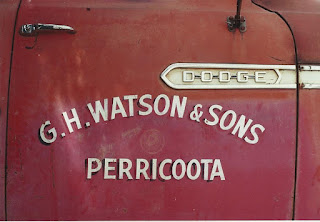








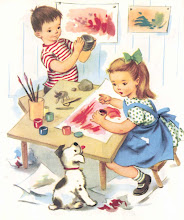
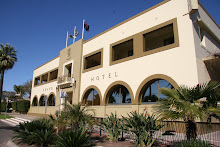
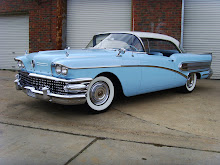





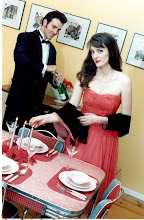







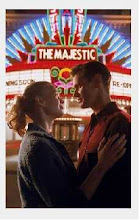



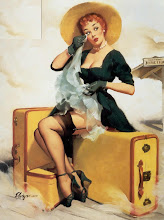
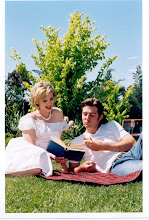
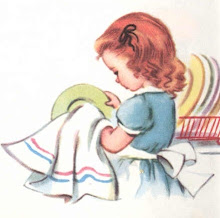































What a fabulous account of the homestead. Thanks so much for sharing, it was beautifully written. How exiting that they are opening it up for weddings - it would be beautiful!
ReplyDeleteMany great childhood memories of staying at the homestead when my grandmother Phyllis Amy Bell worked as housekeeper for Ron and Jill Watson.
ReplyDelete